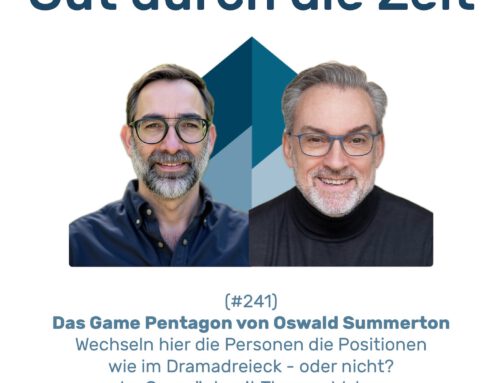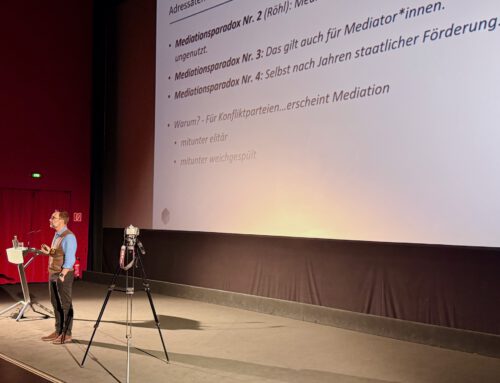INKOVEMA Podcast „Well through time“
#28 – The driver dynamics of transactional analysis
Die ambivalenten Wirkungen der fünf Antreiberdynamiken beim Umgang mit Stresserleben. Im Gespräch mit Natalia Berrio Andrade.
Well through time. The podcast about mediation, conflict coaching and organisational consulting.
Natalia Berrio Andrade, is a teaching trainer and teaching supervisor for transactional analysis (PTSTA-C) and Aikido master (5th Dan Aikikai Tokyo) and founder of the institute. She is a lecturer at the Deggendorf University of Applied Sciences and runs the TA-Campus in Hamburg. Together with Dr Sascha Weigel, she explores the ambivalent phenomena and modes of action of the – five driver dynamics conceived by Taibi Kahler in transactional analysis.
Conflicts occupy us, and not only when we argue with the conflict partner and fight for our perspective, want to fight through our ideas for solutions – and simply (want to) be right – and want to have this confirmed, NO, our conflicts also occupy us the other 23 hours of the day, they drive our pulse up, drive us to despair – it's not easy to understand why our conflict partner doesn't see things the way we do - in short: We feel driven and get stressed. And as a party to the conflict, we also have to find solutions for this and create solutions as a counsellor. And to ensure that this works well – with yourself or in individual counselling sessions, transactional analysis has the concept of driver dynamics at the ready. And that's what we're going to talk about today.
Contents:
The concept of drivers originates from Taibi Kahleran American psychologist and transactional analyst. It is used to identify and diagnose problematic behaviour. His core idea is that driving behaviour only leads deeper and deeper into the mess, even though it is subjectively motivated by a solution.
As a mental concept, drivers illustrate the basic impetus of transactional analysis to become autonomous, to free oneself from "foreign", oppressive "powers" like hardly any other concept.
The driver concept is a helpful and – important observation concept for the trained eye – when diagnosing conflict and communication. Although it requires a great deal of attention and therefore practice, it is worthwhile for mediators and professional conflict managers.




Leave A Comment